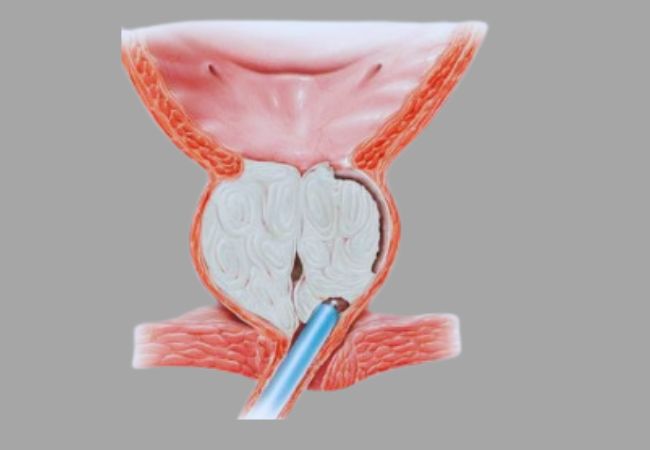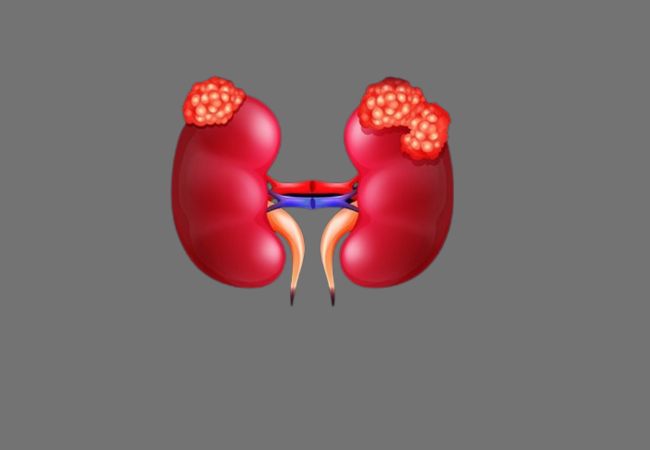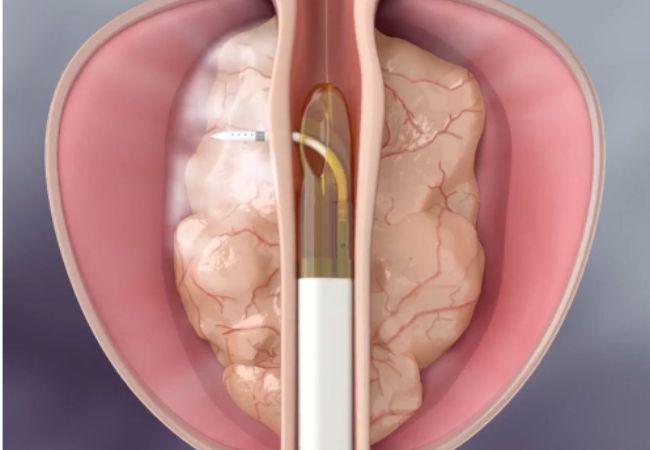
July 13, 2023
Prostate Cancer: Symptoms, Causes, Diagnosis, Treatment, and Surgery.
Prostate cancer commonly develops in individual’s assigned male at birth, in the prostate gland, which is located below the bladder and in the anterior part of the rectum. Prostate Cancer is a serious disease, however, earlier Diagnosis and Treatment of Prostate Cancer in India can eradicate the cancer.
Symptoms of Prostate Cancer
Early stages of Prostate Cancer rarely cause symptoms. Therefore, it is important to have regular check-ups and screenings with your doctor to detect it at an early stage. Early detection of prostate cancer can help to reduce complications and improve treatment outcomes. If you experience any of the following symptoms, consult your doctor immediately.
- A weak or intermittent urine flow
- Control issues with the bladder (Urinary Incontinence)
- Painful Ejaculation
- Erectile Dysfunction
- Back pain, hip pain, or thigh pain
- Blood in the urine
- A dull pain in the lower pelvis
- Passing urine regularly, particularly at night
- Bowel Control Loss
Causes of Prostate Cancer
Experts are unsure of what causes prostate cells to become cancerous. As with all types of cancer, prostate cancer develops when cells divide more rapidly than usual. Normal cells eventually die, but cancerous cells do not. It is more likely they multiply and grow into a lump called tumor. Parts of the tumor can break off and spread to other parts of your body as the cells multiply.
There are certain risk factors related to Prostate Cancer:
- There is a higher chance of developing Prostate Cancer if you have a “family history of Prostate Cancer.”
- If you have Lynch syndrome or inherited mutated (changed) genes associated with breast cancer, you are at a greater risk.
- As you age, your risk increases. You’re more likely to be diagnosed over 50. Most cases of prostate cancer occur in males who are 65 years of age or older.
Diagnosis of Prostate Cancer
If your doctor detects an abnormality during a prostate cancer screening, he or she may suggest further tests to determine whether you have prostate cancer. Mentioned below are the different types of diagnosis.
- Ultrasound. An ultrasound transrectal procedure involves inserting a small probe into your rectum, about the size and shape of a cigar. Sound waves are used to create a picture of your prostate gland by the probe.
- Magnetic resonance imaging (MRI). The doctor may recommend an MRI scan of the prostate in some situations in order to obtain a more detailed picture of the prostate. Your doctor may use MRI images to plan a procedure for removing prostate tissue samples.
- Collecting a sample of prostate tissue. Your doctor may recommend a prostate biopsy in order to determine whether there are cancer cells in your prostate. It is common to conduct a prostate biopsy by inserting a thin needle into the prostate in order to collect tissue. To determine whether cancer cells are present in a tissue sample, the sample is analyzed in a laboratory.
Prostate Cancer Treatment
There are many Prostate Cancer Treatment methodologies available in the Healthcare Industry at the moment. Some of them include:
- Surgery
- Hormone therapy
- Targeted therapy
- Radiopharmaceutical therapy and Radiation therapy
- Chemotherapy
- Immunotherapy
- Bisphosphonate therapy
Prostate Cancer Surgery
There are several surgical methods to treat Prostate Cancer. One of them includes Robotic Radical Prostatectomy.
Robotic Radical Prostatectomy
Using robotic radical prostatectomy, prostate cancer can be successfully treated in a minimally invasive manner. It involves the use of a robotic system by a surgeon to remove the entire prostate gland and surrounding tissue during the procedure. This system consists of a console from which the surgeon is able to control the robotic arms. The surgical instruments and a high-definition camera are installed on the robotic arms. Using the camera, the surgeon is able to see the surgical site in great detail in 3D.
Due to the precision and control offered by the robotic system, the surgery results in less blood loss, less pain, and a faster recovery time than traditional open procedures. Under general anesthesia, the procedure usually takes between two to four hours.
The robotic radical prostatectomy is a safe and effective treatment option for prostate cancer, removing the cancerous tissues with a high success rate and reducing the likelihood of a recurrence. There are, however, potential risks and complications associated with this surgery, which should be discussed with a medical professional.
Conclusion
Early diagnosis and treatment are crucial in eradicating the cancer. It’s important to consult with a medical professional to discuss potential risks and complications associated with the surgery. For comprehensive and innovative treatment strategies, we recommend visiting Cochin Urology, where a dedicated team of passionate urologists leads the way in providing expert care.


Kidney Cancer in India: All You Need to Know


Rezum Water Therapy Treatment for Prostate Inflammation
Stories
Glimpses of what’s happening in Cochin Urology premises!



